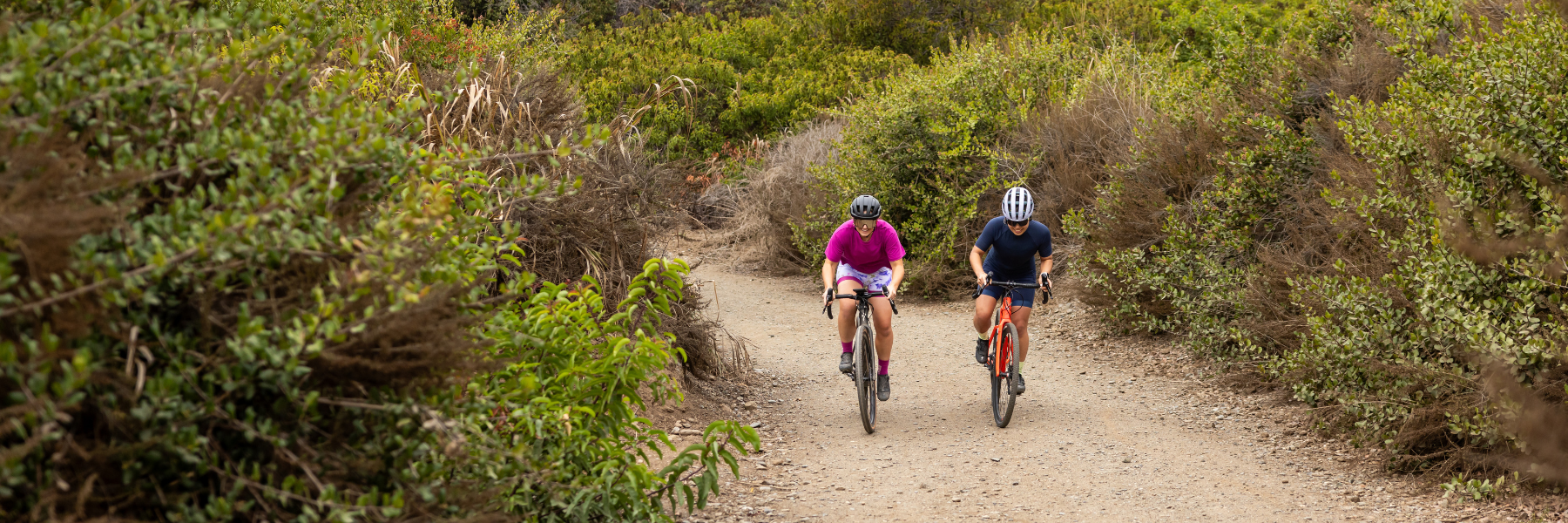
10 Tips to Help You Crush the Return to Gravel Riding This Spring
Springtime is always bittersweet as the snow melts and you start putting your skis away. I personally love this time of year though- when gravel roads start clearing and you can hop back on the bike, but still sneak in some corn skiing. The transition to riding season never fails to catch me off guard though; neither my bike nor my legs are ever really ready for it. So instead of waiting until the first sunny day to pull out your bike and go for a ride, here is a list of things you can try to do in advance to make the transition to riding a little smoother.

1. Do a solid bike check
Just because everything was running smoothly last fall doesn’t mean it will be when you take your bike out this year. Mysterious things tend to happen when you leave your bike in the garage over winter, so it’s a good idea to check these things before your first ride:
Chain: Start the season off on the right foot by cleaning and lubing your chain before your first ride. You may even want to consider replacing your chain from last year. If you ride frequently, replacing your chain annually is a good rule of thumb and your drivetrain will thank you. Chain-length check tools are inexpensive, or you can have the chain length checked by your local bike shop.
Brakes: Check your brake pad wear. Like your chain, this may be a convenient time for an annual pad replacement. If you’re anything like me, once summer hits full swing, the last thing you want to think about is bike maintenance.
Fit: The wrong saddle height and reach can wreak havoc on your back, knees, and shoulders. You may have to play around with these as you ride to find what works best for you. Compared to road riding, the position on a gravel bike is often more upright, which gives you more control over the bike AND makes it more comfy on rough surfaces.
Tire Sealant: It's fairly safe to assume that the majority of gravel bikes run tubeless tires these days. If that’s the case for you, this is a good time to add sealant to your tires to prevent leaks. Sealant can dry out over winter, so check first and remove any dried sealant. Sealant should be changed every 2–6 months anyway. If you live in a drier climate, you’re probably on the shorter end of this range.
Give yourself some buffer room before you meet friends for your first ride; take the time to ride your bike around the block and shift through all the gears. Also, before any ride, I always take the extra couple minutes to lube my chain and check tire pressure.

2. Pack your saddle bag
Even if you are just going for a short, easy cruiser your first time riding, you never know what mechanical issues you may run into. There are tons of great storage systems you can mount on your gravel bike - bar bags, saddle bags, and even frame bags- so you can channel your inner Mary Poppins and be prepared for anything. Plus, if you put it all in there now, you will forget and thank yourself later when you discover emergency treats/ cash hiding when you hit the wall on a ride in late fall. Here is a list of what I like to bring with me on the bike:
-Flat kit (CO2 cartridge or hand pump, tire plugs, spare tube and tire levers for if things get really ugly)
-Multi-tool (especially important if you have a new bike/ may need to make fit adjustments)
-Mini container of chamois butter
-Stick sunscreen + chapstick
-Cash (for epic bonks/ emergencies)
-Snacks on snacks (will get to this later)
3. Know/review how to fix a flat
The trend towards tubeless tires has been revolutionary in terms of ease of fixing flats- as plugging a hole is significantly easier (and less time consuming) than changing a tube and seeding your tire on a rim. However, I’ve definitely run into times when I’m not able to seal a hole and need to put a tube in (hence why I always bring a tube and tire levers on longer rides). Every year I have to review this process, even though I tell myself I’ll definitely remember and won’t need to review it the following year. And if you don’t have someone to go through it with you, there’s always hundreds of great tutorials on YouTube!
4. Get front and rear lights on your bike!
Whether or not you plan to ride in the dark, it sometimes ends up happening anyway. Better to be prepared than not- and besides, it's always a good idea to have lights on your bike any time you plan to ride on gravel or road- or anywhere cars may be!

5. Invest in a new chamois
Start off on the right foot, or cheek, by indulging yourself in a new chamois (or two or three). Although it's tempting to use the same chamois year after year, the number one way to chafe is by using an old chamois. Do yourself a favor and get yourself some new shorts - your rump will thank you! Check out all of Wild Rye's Chamois here.
6. Pack extra layers
Gravel riding can take you far, and through a lot of different weather systems- especially in the spring. Sunshine in April can turn to rain (or sleet or even snow) in Colorado pretty quickly. I’ve learned my lesson one too many times, and now I pretty much always have an extra rain coat on me year-round (again, this is where all the storage systems on a gravel bike really come in handy!). Layers are great because you can always strip down (or re-layer) if weather changes throughout your ride.
7. Bring lots of snacks!
I like to stash snacks that I never touch or remove from my bar bag unless there is an emergency/ epic bonk (think gummies and gels that have a long shelf life). I always bring additional snacks on any ride - short or long (like a bar, leftover waffles from breakfast, or gummy bears-whatever sounds tasty!). You never know when your loop will take you longer, you have a mechanical, or you just straight up didn’t eat enough beforehand. It’s always better to be prepared, and fueling while on the bike will only make you feel stronger and ride faster, anyway!
8. Plan your route
It's always a good idea to have a general idea of what you’re going to ride- and if you are riding alone, always let someone know where you plan to ride! I invested in a Wahoo last year, and it was a total game-changer. A lot of gravel routes are in rural areas where there isn’t cell service, so you aren’t able to use google maps (or phone a friend) to find a way once riding. With a GPS device, you are able to download a route and follow it all the way back to your starting point without fear of getting lost or needing to bring a tour guide. That means endless miles of stress-free solo riding!
9. Activate your glutes
Biking isn’t typically a sport that leads to injury, but knee problems can pop up if you aren’t careful. Activating and strengthening your glutes can help offload your knees and avoid common conditions like IT Band Syndrome and Patellofemoral Pain. Just a little bit of strength training can go a long way in terms of preventing injury.
Try incorporating lateral band walks or fire hydrant walksinto your regular gym routine or pre-ride.
10. Ease into it
Although it’s often tempting to hammer your first few times on the bike, especially after a long winter, it can take a few rides to get your legs under you. That puts extra stress on your joints and muscles, which can lead to overuse injuries. Try to get at least two weeks of easy distance/ volume training under you before you ramp up the intensity or embark on any epics. The base fitness you gain will help you ride further and faster in the long run.

11. Bonus tip - remember: boobs over bars!
I first learned about this with mountain biking and it was a total game-changer. I used to think that I needed to get my weight back on techy downhills so I didn’t risk going over the handlebars. When I learned that you actually want to have your weight forward and over your front wheel to prevent it from sliding out from under you, I started riding a whole lot better. Although gravel riding isn’t mountain biking, I’ve hit some very steep, loose, downhills on a gravel bike that require the same skill. When I’m descending on a gravel bike, I always think “elbow bent & boobs over bars!”.
Happy riding!
-Jessica Yeaton PT, DPT


![[Iced Matcha] Iced Matcha Keller Crop Tank in a flatlay view](http://wild-rye.com/cdn/shop/files/WILDRYE-KELLERCROPMATCHALEAD_R1_1.jpg?v=1741123409&width=1024)
![[Iced Matcha] Keller Crop Tank iced matcha front crop](http://wild-rye.com/cdn/shop/files/1_c28d0b8e-0fd7-4037-bd98-1b989466e5db.jpg?v=1741123409&width=1024)
![[Matcha Morchella] Eleanor Chammy Matcha Morchella flatlay](http://wild-rye.com/cdn/shop/files/WILDRYE-ELANORMATCHALEAD_R1.jpg?v=1749682242&width=1024)
![[Matcha Morchella] Eleanor Chammy Matcha Morchella side pocket detail](http://wild-rye.com/cdn/shop/files/WILDRYE-_10326_1.jpg?v=1749682242&width=1024)
![[Olive You] Eeva short overalls olive green in layflat view](http://wild-rye.com/cdn/shop/files/WILDRYE-EEVAOVERALLSPRUCELEAD_R1.jpg?v=1740700436&width=1024)
![[Olive You] Eeva short overalls olive green front full body](http://wild-rye.com/cdn/shop/files/WILDRYE-_10963.jpg?v=1740700436&width=1024)
![[Matcha Morchella] Matcha Morchella print Rita 6" bike short layflat](http://wild-rye.com/cdn/shop/files/WILDRYE-RITAMATCHALEAD_R1.jpg?v=1754605456&width=1024)
![[Matcha Morchella] Matcha Morchella print Rita 6" bike short full body](http://wild-rye.com/cdn/shop/files/WILDRYE-_11769.jpg?v=1754605456&width=1024)
![[Iced Matcha] Wild Rye Mackay Crop Tee Iced Matcha Flatlay](http://wild-rye.com/cdn/shop/files/WILDRYE-MACKAYMATCHALEAD_R1_1.jpg?v=1756849469&width=1024)
![[Iced Matcha] Wild Rye Mackay Crop Tee Iced Matcha Front Crop](http://wild-rye.com/cdn/shop/files/WILDRYE-_10344.jpg?v=1756849469&width=1024)
![[Black] Freel Bike Short Black Flatlay](http://wild-rye.com/cdn/shop/files/WILDRYE-FREELBLACKLEAD_R1.jpg?v=1757971505&width=1024)
![[Black] Freel 12" bike shorts in black, on model front crop view](http://wild-rye.com/cdn/shop/files/WILDRYE2984.jpg?v=1757971648&width=2048)
![[Black] Parker Skort Black Flatlay](http://wild-rye.com/cdn/shop/files/WILDRYE-PARKERSKORTBlackLEAD_R1.jpg?v=1751564534&width=1024)
![[Black] Parker Skort Black front full body, paired with green tank top](http://wild-rye.com/cdn/shop/files/WILDRYE4806.jpg?v=1757605449&width=2048)
![[Sedona Vista] Bike water bottle with sedona vista print](http://wild-rye.com/cdn/shop/files/WILDRYE-WATERBOTTLESEDONA_R1.png?v=1741137070&width=1024)
![[Watercolor] Bike water bottle with watercolor print](http://wild-rye.com/cdn/shop/files/WILDRYE-WATERBOTTLEWATERCOLOR_R1.png?v=1741137070&width=1024)
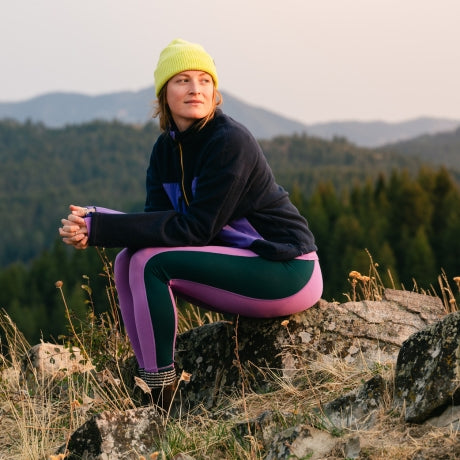
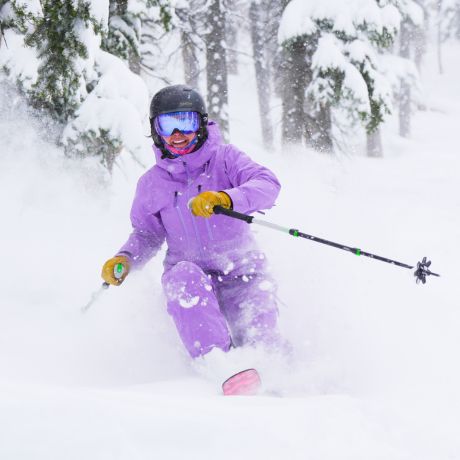
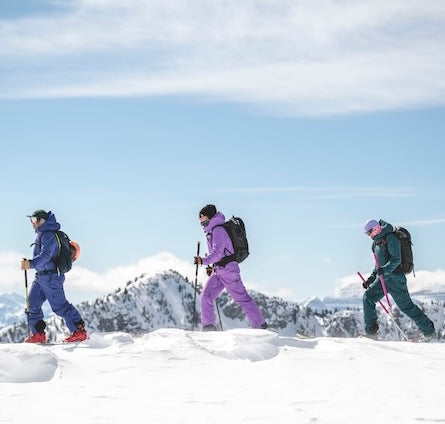
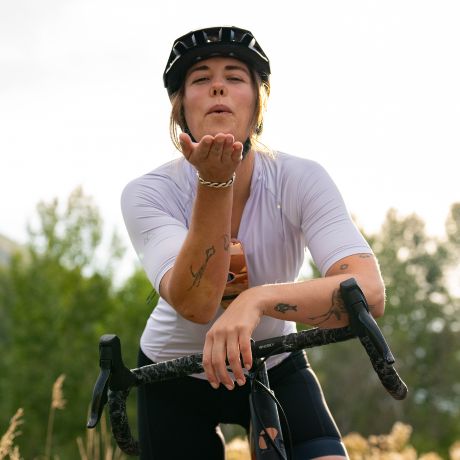
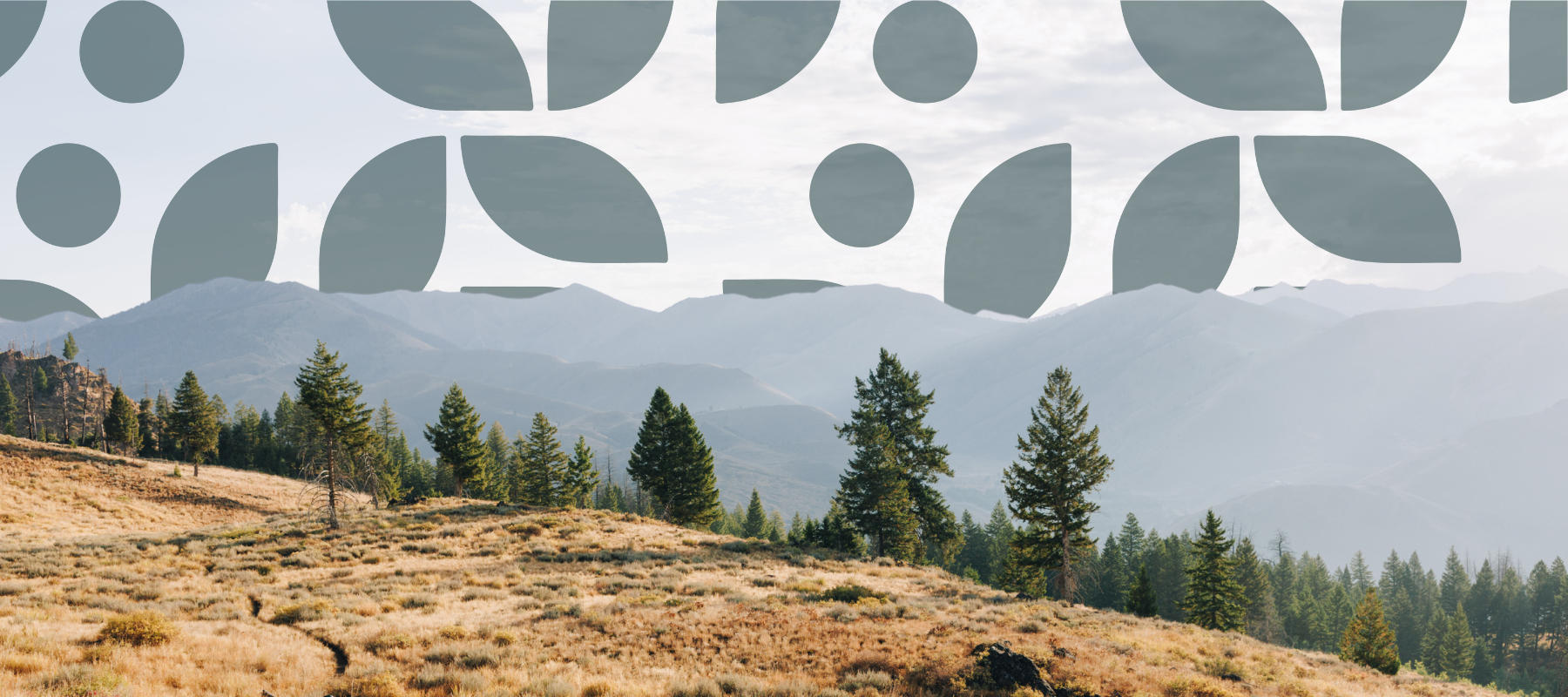
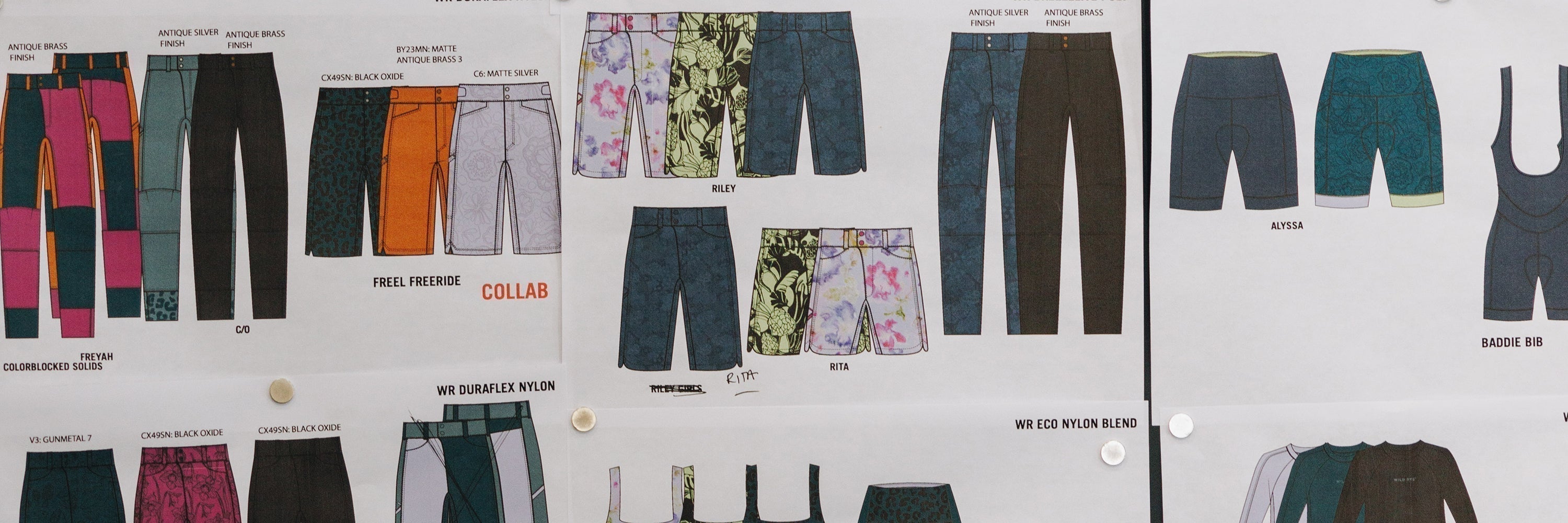
Leave a comment
This site is protected by hCaptcha and the hCaptcha Privacy Policy and Terms of Service apply.